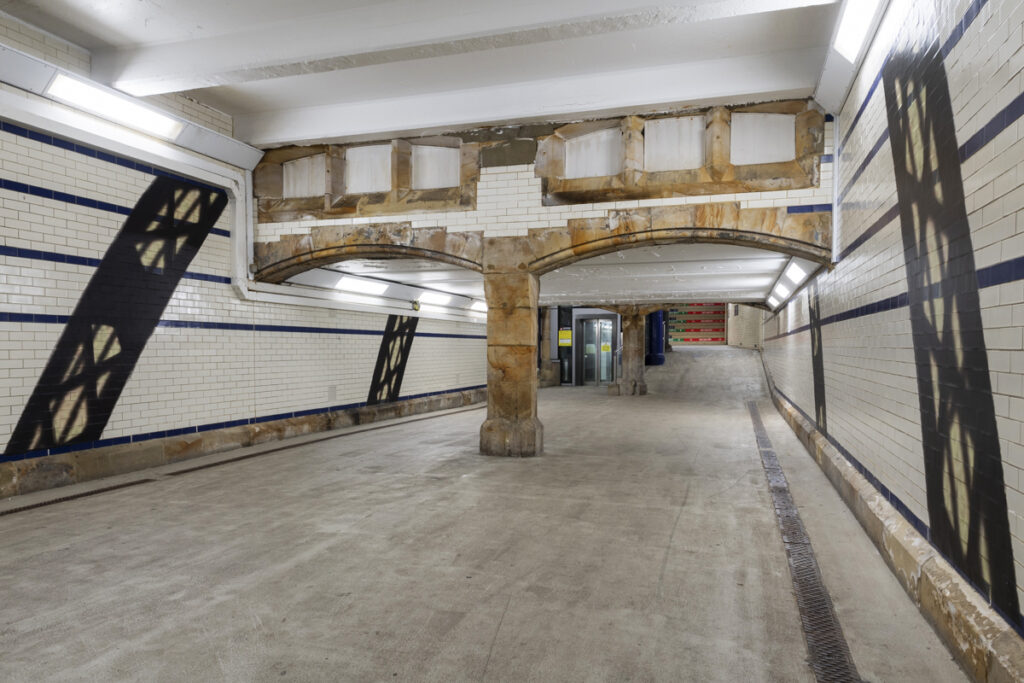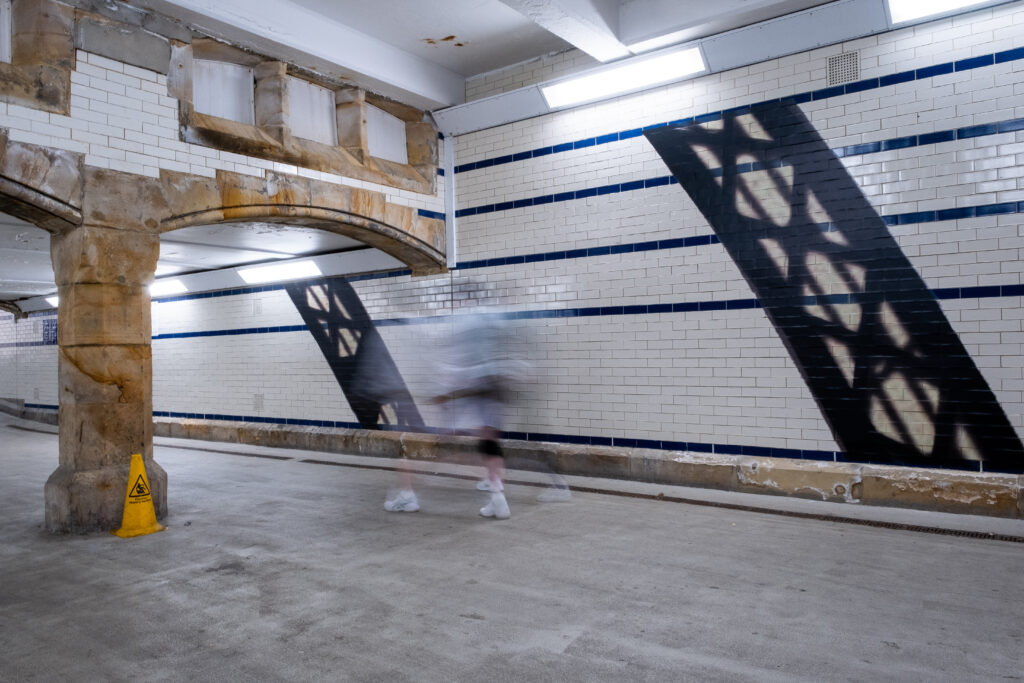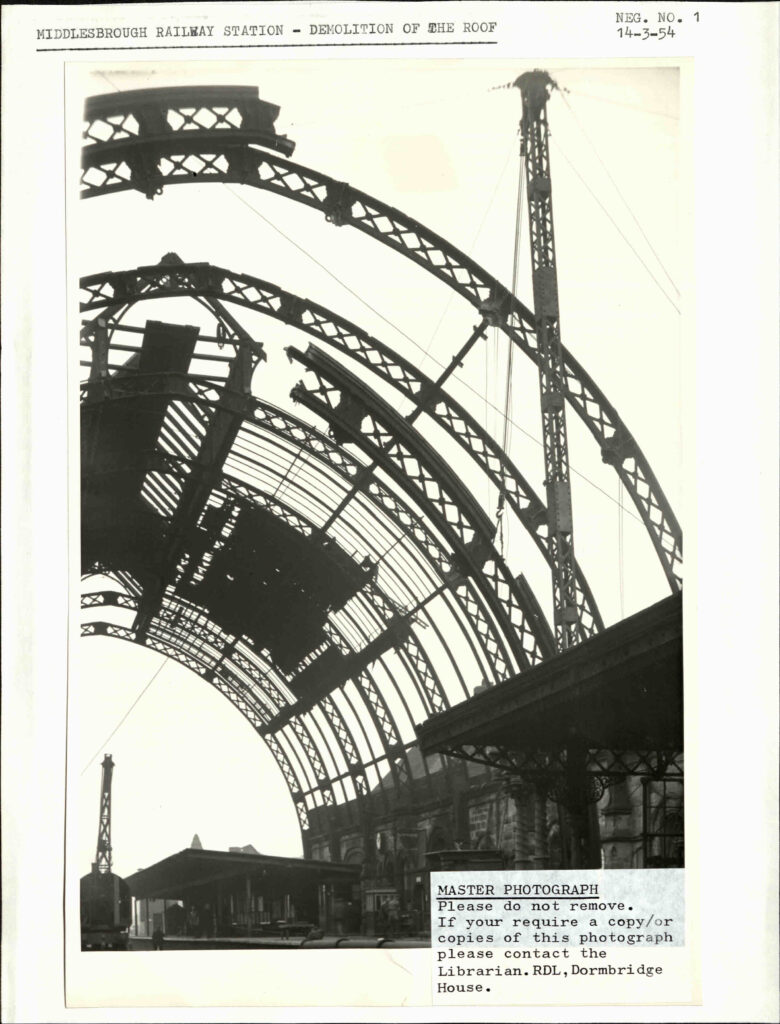My name is Bethany Hunton and I am a North East based artist, exploring relationships between materials and site – through sculpture and installation. Testing the properties of locally sourced traditional materials and developing relationships and languages with them informs my practice. As I was born and raised in Middlesbrough, my childhood was widely dominated by industry due to my family’s connections with the steel works and shipyards. Artistically I’m always brought back to those innate connections. By creating sculptural installations that are situated in surrounding areas of significance to me, I experiment with associated connotations of my local area’s heritage and what they mean to me. Researching into and reliving the journeys and absence of said materials, allows my practice to be ever changing in regards to a contemporary context.

The work that I created as a result of The Tunnel Gallery commission was titled ‘Penumbra’ 2021 and was installed on October 1st 2021 at the beginning of Middlesbrough Art Weekender 2021. This was my first commissioned public installation as an artist. The description of the piece is as follows:
‘A penumbra is the region around the focal point of a cast, where the shadow is only partial, or imperfect. These form when a portion of the light from the source gets blocked by a shadowing object.’
‘Penumbra’ by Bethany Hunton is the most recent Tunnel Gallery Commission as part of the Celebrating Hidden Middlesbrough project. It explores the hidden narrative of the ornate, elliptical railway station roof – designed by British architect William Peachy, that once existed in Middlesbrough, before it’s inevitable removal due to severe damage during a German air raid in 1942.
The installation deals with the notion of material impact and human intervention on site. This form of materiality is dependent on the absence of materials, allowing the artist to reinstate these impacts onto the site to create a familiar experience for the viewer. By emulating the iron lattice girders from the roof and the shadow that resulted from the combination of these and the Victorian glass, the installation is reminiscent of the cascading light and shadow onto the train platforms. Shadows in which the artist’s grandfather once danced in, at a young age. Architecture has always been a huge inspiration in my work and through time a large quantity of these beautiful and grand buildings have been demolished due to various reasons – such as The Royal Exchange and the old railway station roof. Studying this absent architecture is a large part of my artistic process and will always inform it.
I’ve always been interested in my areas local heritage due to being very close to my grandparents and being around them as they worked in the steel industry. I am extremely proud to be from Middlesbrough. My work usually stems from a conversation I’ve had with either a family member or a member of the local community – hearing these stories that are so important to the people that tell them influences me greatly.
This particular installation responded to a conversation I had with my grandad about the times he would wait for his father to get off the train. The elliptical station roof designed by William Peachy would cascade shadows onto the platforms when the sun was at a certain point. My grandad expressed how when these shadows would show themselves him and his younger brother would dance in them whilst awaiting their dad. This was a beautiful story and concept to me that was so simple yet made a huge impact on my grandads life and memory. By attempting to recreate these shadows I really wanted to show the current and newer residents of Middlesbrough some of what it used to be like for the older generation.
Partaking in this project and commission has been a massive learning curve for me as an artist. I now have experience working with various arts organisations around the North East, as well as with different companies that I may need to work with throughout my practice – such as installation and printing companies. This kind of experience is so valuable to any upcoming artist or creative and I am beyond grateful for the opportunity to be a part of the Celebrating Hidden Middlesbrough project.
My reflections and learning from the project…
Get out there and meet people. The best piece of advice I can give is to go to local exhibitions, meet other creatives and form connections. Arts organisations are always looking for creatives to support and encourage which I think is amazing.

This project has had a huge impact on my practice, being able to create a concept and be able to execute it to such a high standard was incredible. Being a fairly recent graduate, I never thought I would have achieved what I have in the past year. One of my biggest career ambitions was to have a public installation in my hometown for a period of time and thanks to everyone involved in Celebrating Hidden Middlesbrough and The Tunnel Gallery, it has been realised.
This opportunity has opened up so many doors for me in regards to my creative practice and in other ways. I had the opportunity throughout my commission to run workshops for children and young people, with Navigator North, as well as working with them in their creative arts space – The Masham, which were extremely rewarding for me. Hearing the communities stories during my time at The Masham made me realise why I love doing what I do. As well as this, during this time I had the chance to work with various professional photographers and creatives which was incredible. Middlesbrough is an unbelievable town and the members of the community are so proud of what they do and where they’ve come from. If it were up to me, I would love the Heritage Action Zone and Celebrating Hidden Middlesbrough to continue for the foreseeable. The community engaging with the staff and creatives involved has proven rewarding for both sides and has brought life back to the town centre.
I am extremely grateful to all the organisations involved, especially to Tony Charles from Platform A Gallery and to Vicky Holbrough and Nic Golightly from Navigator North.

